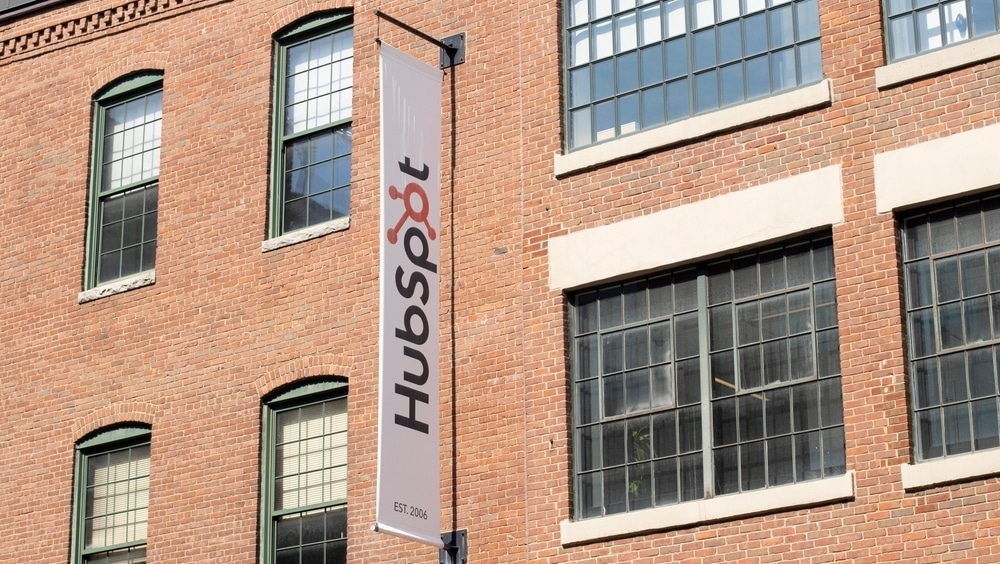HubSpot’s history began in the classrooms of MIT in the early 2000s when Brian Halligan and Dharmesh Shah came up with the idea of inbound marketing. They wanted to capitalize on the internet revolution to change the options small companies had to approach marketing and compete with much larger enterprises.
Whether you’re a small business owner, marketer, or investor, the history of HubSpot provides a fascinating look at how a bright and unique idea can lead to the creation of a multi-billion dollar enterprise. At Business2Community, we’ve delved deep into a range of resources to give you a comprehensive account of the HubSpot story and what you need to know about the company’s fundamentals.
A History of Hubspot – Key Dates
- Brian Halligan and Dharmesh Shah founded HubSpot in 2006 to provide small businesses with an affordable way to connect with new customers in the way big firms were able to.
- By 2010, HubSpot’s revenue had increased to $15.6 million from $255,000 in 2007.
- In 2011, co-founder Halligan was awarded the Ernst & Young Entrepreneur of the Year award.
- HubSpot filed with the Securities and Exchange Commission to be listed on the New York Stock Exchange in 2014.
- Following a serious accident, in 2021, HubSpot announced Yamini Rangan would replace Brian Halligan as CEO.
Hubspot: Quick Facts
- Date Founded: June 2006
- Company Founders: Brian Halligan and Dharmesh Shah
- Industries: Marketing
- Hubspot Net Worth: $25.1 billion
- Listing: NYSE: HUBS
Who Owns Hubspot?
HubSpot is a publicly traded company listed on the New York Stock Exchange. Over 90% of the company’s stock is owned by institutional investors such as The Vanguard Group, Inc. (9.48%), Blackrock, Inc. (7.28%), and FMR LLC (6.16%). HubSpot’s co-founders Brian Halligan and Dharmesh Shah own 1.01% and 2.68%, respectively.
MIT classmates Halligan and Shah founded HubSpot in 2006 to provide very small business owners with an affordable way to connect with new customers in the way big firms do. The pair had previously entered their concept into MIT’s business plan competition where they scooped second place.

HubSpot offers a cloud-based customer relationship management (CRM) software solution for automated marketing, content management, CRM, and campaign management. It can also integrate with other CRM tools and social media and offers tools to help HubSpot users build webpages, improve SEO, and bolster security. HubSpot’s range of multiple free tools and paid solutions include:
- Marketing Hub
- Sales Hub
- Service Hub
- Content Hub
- Operations Hub
- Commerce Hub
Who is the Hubspot CEO?
HubSpot announced Yamini Rangan would be appointed as HubSpot CEO in September 2021. Before this, Rangan had been the company’s first chief customer officer, during which time she ran marketing, sales, and service. Rangan boasts many years of experience in the tech industry, having held senior roles at Dropbox, Workday, and SAP.
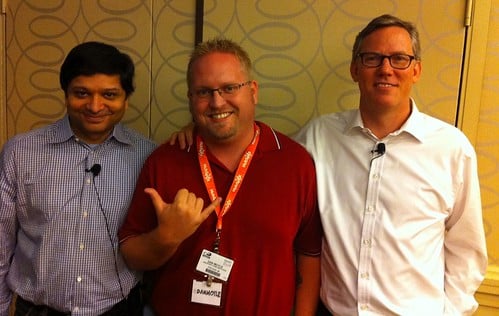
Rangan succeeded co-founder Halligan who had served as CEO since HubSpot was founded in 2006. Halligan stepped down after suffering a snowmobile accident but remains an executive chairman of the company. Halligan is also now an entrepreneurship lecturer at MIT and senior advisor at Sequoia Capital where he applies his expertise to coach other founders at the start of their business journey.
He’s published several books, the first of which was co-authored with his HubSpot co-founder Dharmesh Shah. Titled Inbound Marketing, the pair introduced the term and concept of marketing to people through useful information rather than obvious adverts.
| CEO | Tenure |
| Yamini Rangan | 2021-present |
| Brian Halligan | 2006-2021 |
HubSpot is headquartered in Cambridge, Massachusetts. The company also has offices in San Francisco, Canada, Europe, Australia, and Japan.
Growth and Development of Hubspot
HubSpot was conceived in the early 2000s by MIT classmates. Since its formal launch in 2006, HubSpot has conquered its initial target market and gone on to develop an impressive range of products for its users.
Here, we run through some of the key moments in the HubSpot story which demonstrate how a tech start-up can achieve financial success and become a multi-billion dollar business in less than two decades.
2006-2011: An Innovative Vision for Internet Marketing
HubSpot was founded in 2006 by MIT classmates Brian Halligan and Dharmesh Shah. Their ambition was to create an affordable solution to help very small businesses connect with new customers more successfully through effective inbound and outbound marketing.
They saw that smaller start-ups couldn’t compete with bigger companies when it came to the expensive traditional marketing approaches of cold calling, mass marketing, and advertising. Halligan and Shah recognized, however, that the internet had changed the playing field somewhat, with the marketing game becoming more about engagement than bombardment. This is how they came up with the concept of inbound marketing.
After graduating, the pair set their sights on making their ambitions a reality. They began a blog to share their ideas which developed into an online community that supported small businesses to develop and implement inbound marketing strategies. The inbound community grew rapidly and the co-founders began to package the first HubSpot solutions together. This included social media, website optimization, and engagement tools and strategies.
HubSpot’s founders impressed investors with their ideas and picked up $500,000 in seed funding from private investors in 2006 and a further $5 million in 2007 in venture capital investment
HubSpot managed to bring in $255,000 in revenue in 2007. In a push to grow more rapidly, HubSpot recruited a sales representative to identify new leads and increase sales of the company’s packages outside of the community. An early success story of this sales approach was with Boston-based PR agency, Schwartz Communications. In one year, the PR company’s revenue from digital-based services grew by 300%.
Armed with this successful example, HubSpot powered forward. By 2010 the company’s revenue had increased to $15.6 million. In the same year, the company was named by the Boston Business Journal as one of the best places to work in the city.
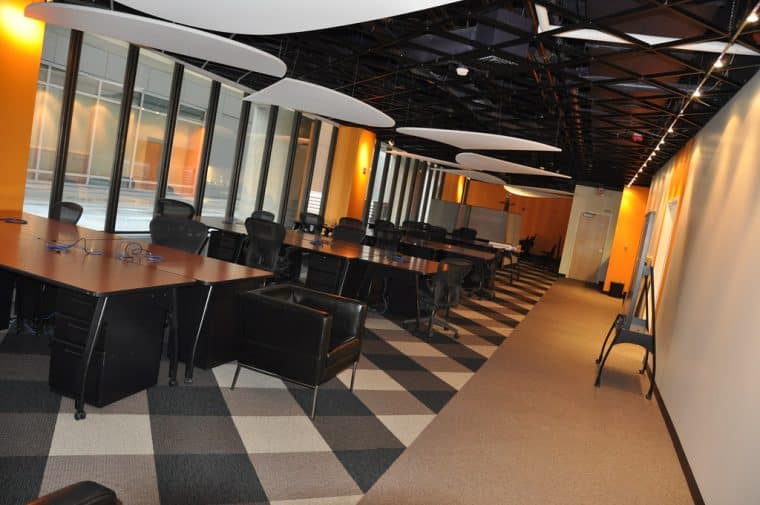
By this point, the HubSpot marketing solution offered a range of tools for social media engagement, content management, analytics, website optimization, and SEO. An especially effective inbound marketing feature of HubSpot’s solution has always been its suite of free online tools, including a website grader that assesses and scores website performance.
2011-2024: HubSpot Accelerates Growth and Launches New Products
Despite this incredible growth, 2011 was a turning point for HubSpot when it finally began to receive the publicity and recognition it would need to become a global business. For example, Halligan was awarded the Ernst & Young Entrepreneur of the Year award.
HubSpot acquired Oneforty in 2011, a social business management company that offered an online marketplace for developers to sell their Twitter apps. In the same year, HubSpot also launched a Twitter tracking feature.
In 2012, HubSpot ran its inaugural INBOUND conference for HubSpot users and partners. INBOUND is a three-day conference that focuses on sharing the latest trends and tactics in marketing, sales, and AI through keynote speeches, breakouts, HubSpot demos, workshops, and networking opportunities.
The event is now an annual date in the calendar and is usually hosted in Boston. It is attended by tens of thousands of people from across the world and has featured contributions from notable speakers such as Oprah, Michelle and Barack Obama, Tig Notaro, and Issa Rae.
With the number of HubSpot users growing and Halligan and Shah’s co-authored book, Inbound Marketing, driving increased publicity, the pair shifted their focus away from targeting small companies and began to develop tools to serve larger businesses with up to 1,000 employees.
In 2013, HubSpot opened its Europe, Middle East, and Africa (EMEA) headquarters in Dublin, Ireland. This was the company’s first international office.
The following year, on August 26, 2014, HubSpot filed with the Securities and Exchange Commission for an initial public offering (IPO) to be listed on the New York Stock Exchange. Under the ticker symbol HUBS, the HubSpot filing raised more than $140 million with shares sold at $25 each. Hubspot’s market cap in 2014 was $890 million following the IPO.
Also in 2014, the company launched its HubSpot CRM Free marketing software. This product can track and manage interactions between a company and its existing and prospective customers. By using HubSpot Free CRM, companies can produce revenue forecasts, report on sales team performance, and identify different revenue streams. The software-as-a-service (SaaS) product is free and can be easily integrated with a range of other products such as G Suite and Microsoft Office.
HubSpot’s CMO Mike Volpe was fired in 2015 for breaking the company’s business conduct code. The controversy surrounded his attempts to get hold of an unpublished copy of a book written by former employee Daniel Lyons. It was reported that HubSpot executives considered the book to be a financial threat and that Volpe resorted to email hacking and extortion in his efforts to stop the book’s publishing.
The investigation found that Halligan had been aware of Volpe’s misconduct and failed to report it promptly. He was sanctioned but remained as CEO.
After the book was eventually published, Lyons claimed that HubSpot had an atmosphere like a “frat house” and that its workers had little job security. HubSpot’s founders issued an official response to Lyons’ book via Dharmesh Shah’s LinkedIn page.
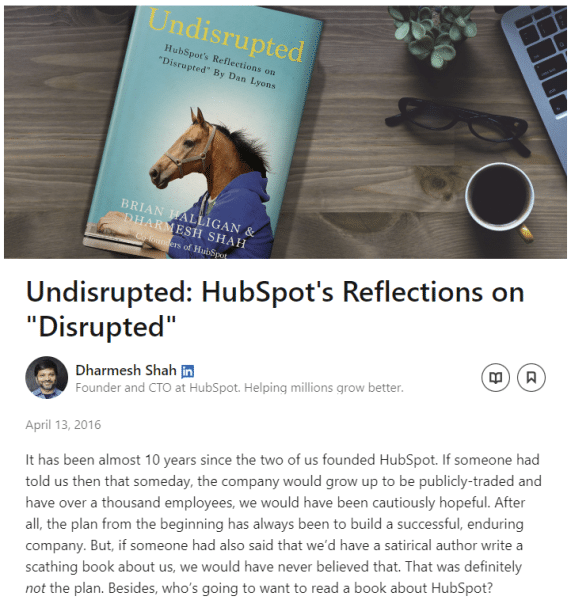
HubSpot Academy was launched in 2016, offering a free online training program. The HubSpot Academy features hundreds of free courses that cover a range of topics such as content creation, inbound marketing, SEO, and social media engagement. Many of the courses also offer certification upon completion.
In 2017, HubSpot acquired Kemvi, an AI and machine learning start-up designed to support sales teams to better understand and connect with their customers. HubSpot also announced the launch of Service Hub, its new customer service software, in 2017. The AI-powered platform offers HubSpot customers self-service functionality, an omni-channel help desk facility, and 24-hour availability.
HubSpot acquired PieSync in 2019, a customer data synchronization platform. It supports businesses by bringing together customer data from a range of disparate systems to give them a consistent view of their customers.
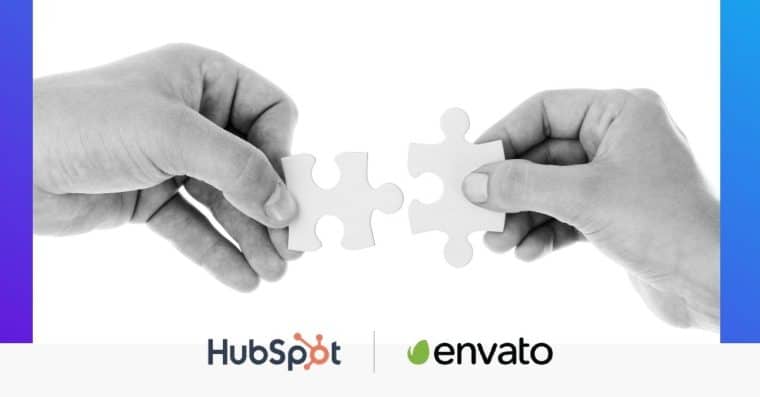
In 2021, HubSpot partnered with digital creative asset platform Envato to launch hundreds of high-quality inbound marketing assets and CRM templates. In the same year, HubSpot acquired The Hustle, a content and email newsletter company focused on the needs of small businesses and entrepreneurs.
Kieran Flanagan, senior vice president of marketing at HubSpot, said at the time:
“For many customers, their first introduction to HubSpot is through our educational blog, Academy, and YouTube content, not our software. More recently, our customers have started to seek out news and trends-based content across new forms of media like podcasts, newsletters, and research, By acquiring The Hustle, we’ll be able to better meet the needs of these scaling companies by delivering content in their preferred formats.”
Following a serious accident, in September 2021, HubSpot announced Yamini Rangan would replace Brian Halligan as CEO. Halligan remained an executive chairman at the company.
In early 2023, HubSpot announced the first redundancies in its history. Following a decline in sales, around 500 employees were laid off, with CEO Yamini Rangan commenting:
“We grew headcount faster than revenue in a number of teams. We were optimistic about our headcount growth and underestimated the impact of the slowdown in 2022. Unfortunately, the level of uncertainty in customer demand now tells us that we may have more challenging times ahead. We need to set ourselves up to weather this storm.”
The announcement came alongside plans to consolidate its office space and save on leasing costs with many employees working on a hybrid basis since the COVID-19 pandemic.
Later in 2023, Hubspot announced the acquisition of Clearbit, a business-to-business data and customer intelligence platform. The addition to HubSpot’s array of services enabled the company to provide its users with deeper insight into their customers and prospects.
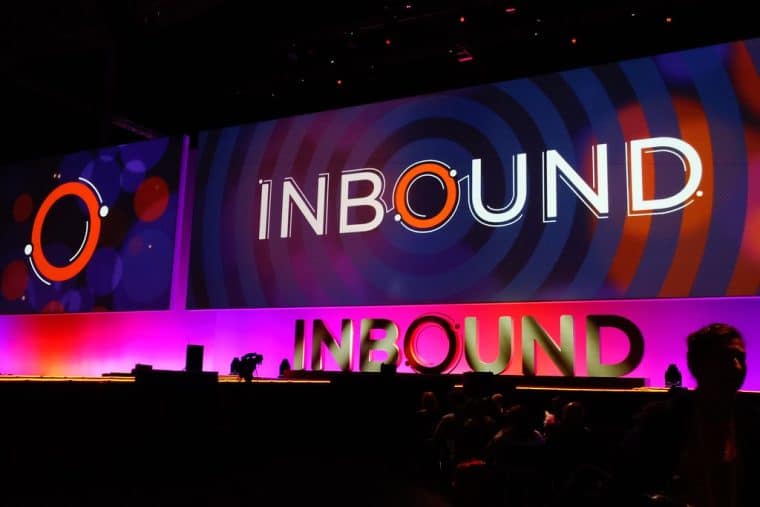
At INBOUND23, HubSpot also announced the launch of an AI-powered service for marketing, sales, and customer service teams, HubSpot AI, and a relaunched Sales Hub solution. HubSpot AI includes:
- AI Assistants to support marketing, sales, and customer service teams to instantly draft content, create images, come up with blog ideas, develop websites, and generate reports.
- AI Agents to help businesses automate and improve customer service via live chat and email.
- AI Insights to provide analysis and recommendations.
- ChatSpot, which will combine the power of ChatGPT with many unique data sources.
Despite its earlier fears, the company reported revenues of $2.17 billion in 2023, a 25% increase on the previous year.
In April 2024, reports surfaced that Google’s parent company Alphabet was considering bidding to acquire HubSpot. As a result, HubSpot’s shares increased by 5%. This idea, however, was met with a mixed reception among industry leaders and HubSpot users alike and it was soon reported that Alphabet had decided not to make a takeover bid after all.
Hubspot Stock History
HubSpot’s share price climbed slowly following its 2014 IPO until an analyst upgrade in 2021 sent the market into a frenzy. In October 2021, the research team at Wells Fargo increased their target from $675 to $750 which took HubSpot’s stock from $680 to more than $800 overnight.
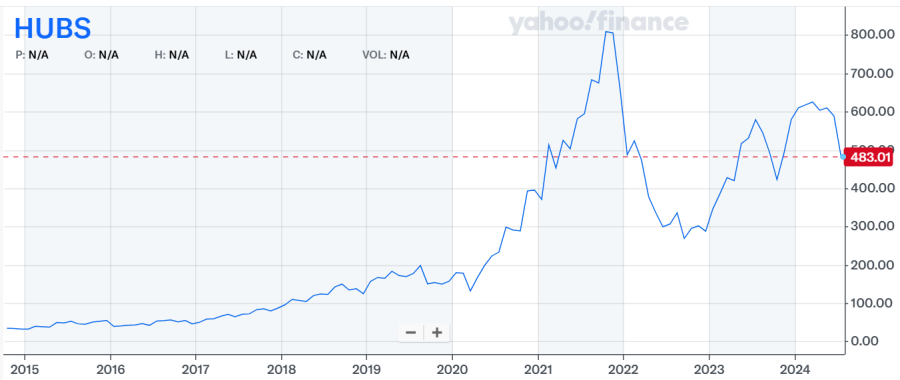
Following the 2021 spike, HubSpot’s share price gradually declined, especially around late 2022 which was followed by the company’s significant staffing cuts. Since then it has climbed in price again, although even talk of a Google takeover couldn’t return HubSpot to its 2021 peak.
Hubspot does not pay dividends. In the 2023 financial year, HubSpot made a loss of $176.3 million on revenues of $2.17 billion. Although the income was a 25% year-on-year increase, the loss is equivalent to -$3.53 per share for the year.
History of the Hubspot Logo
The HubSpot logo was introduced when the company was founded in 2006. The design is modern and simple, using grey text and a unique O design known as the Sprocket. It is an orange-colored ring, with three lines protruding from different sides each with a small ball on the end.
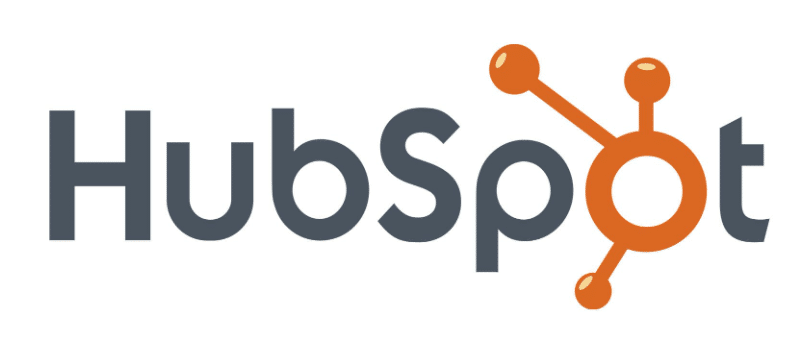
In 2016, HubSpot made the only update to its logo to date. The changes were relatively subtle, featuring slightly darker-colored lettering and a smoother coral color for the Sprocket. The Sprocket also lost its 3D styling to tie in with tech industry trends at the time.
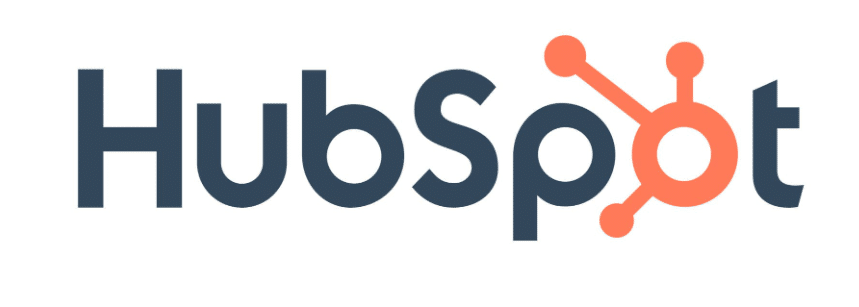
The lines coming out from the Sprocket were also moved slightly to look as though they fit more tightly around the letter P.
The Future of Hubspot
As HubSpot looks to the future, it appears to be in a strong position to continue its impressive trajectory. It has demonstrated continued growth, with revenue consistently increasing year on year. Based on HubSpot’s strong market position and ongoing expansion and development of its product offer, analysts predict this upward trend will continue.
In 2024, HubSpot’s first-quarter financial results showed substantial growth in both revenue and earnings, ahead of analysts’ forecasts. At the time of writing, for the full 2024 financial year, HubSpot has forecast company revenue to be around $2.55 billion.
Yamini Rangan, HubSpot CEO said:
“We kicked off the year with solid revenue growth and another good quarter of operating margin expansion. Customers across all segments are consolidating on HubSpot because it is easy to use, easy to scale, and delivers fast time to value. While the macro environment remains challenging, the pace of innovation has accelerated in our industry with AI. We are setting that pace for scaling companies and are becoming the de facto standard which gives me confidence in our ability to drive long-term durable growth.”
The company’s strategic focus on small to medium-sized businesses remains a key part of its growth strategy, positioning it uniquely against competitors that go after much larger organizations. HubSpot’s commitment to innovation and meeting users’ needs has helped it become a true leader in the fast-moving SaaS landscape.
Businesses are increasingly turning to intuitive, scalable solutions like those offered by HubSpot to drive their own growth and increase customer engagement.
Looking forward, HubSpot is expected to move further into international markets, diversify and grow its range of products, and enhance its online ecosystem through partnerships and acquisitions. This approach should help to further strengthen its market presence and ensure ongoing financial success and relevance in the tech industry, making HubSpot one to watch in the years to come.
